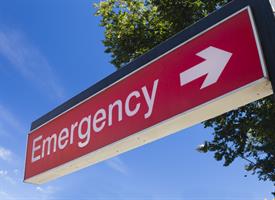A recent analysis involved 1,075 patients at 18 emergency departments associated with cancer centers in the U.S. The majority had received cancer treatment in the preceding 30 days and more than half had advanced or metastatic disease. Researchers were able to detect patterns and details about patient conditions, in real time, and found that pain was a problem in 62 percent of the patients. Poorly controlled pain was common during the week before the emergency department visit, the study found.
Only 8 percent of patients with active cancer had been engaged with palliative care services, which is focused on preventing and treating pain and other symptoms, and improving quality of life.

Image provided by University of Rochester Medical Center.
“We are seeing patients with active cancer every single day in our emergency department and most cancer centers with attached emergency departments are experiencing the exact same thing,” said David Adler, M.D., M.P.H., professor of Emergency Medicine and Public Health Sciences at University of Rochester Medical Center.
Though nearly 70 percent of the patients were admitted to the hospital from the emergency department, 25 percent of them stayed less than two days.
“One reason that emergency physicians may choose to admit cancer patients is to guarantee that the patient connects with a specialist or an oncologist as soon as possible,” Adler said. “If you discharge a patient, it allows for risk of inadequate follow-up, especially if the person lives in a rural or underserved area.
“This is a system failure. Whether the issue lies with primary care doctors or oncologists, or others — the problem is that when a cancer patient gets to the emergency department it may be too late to see this through.”





Comments